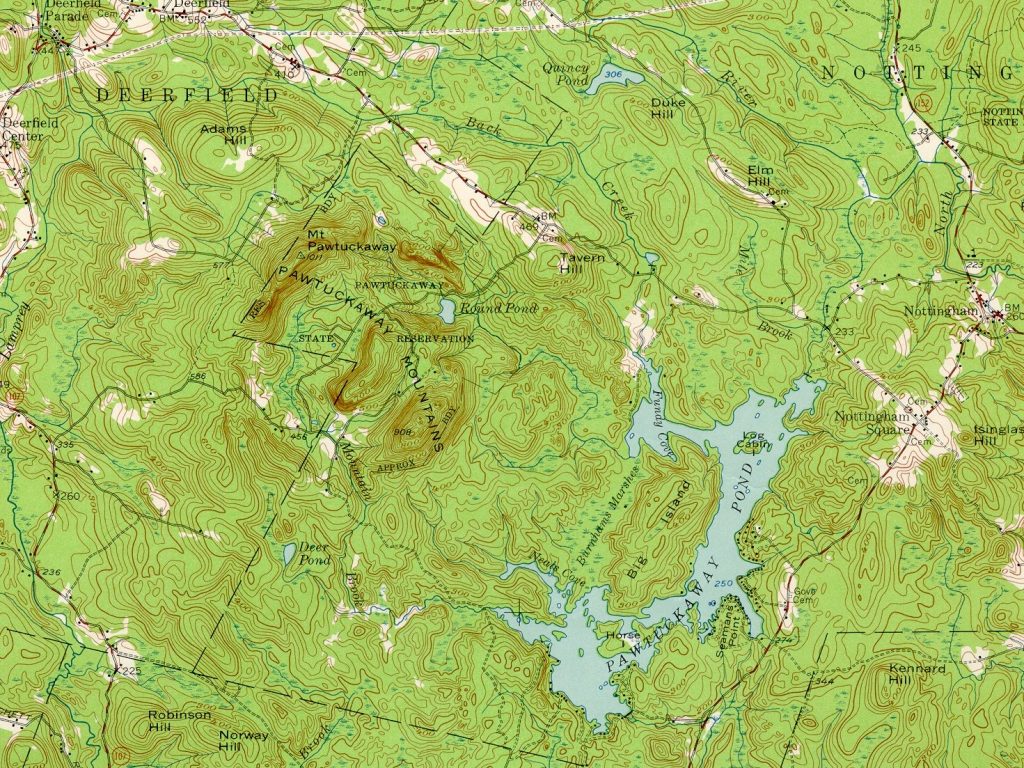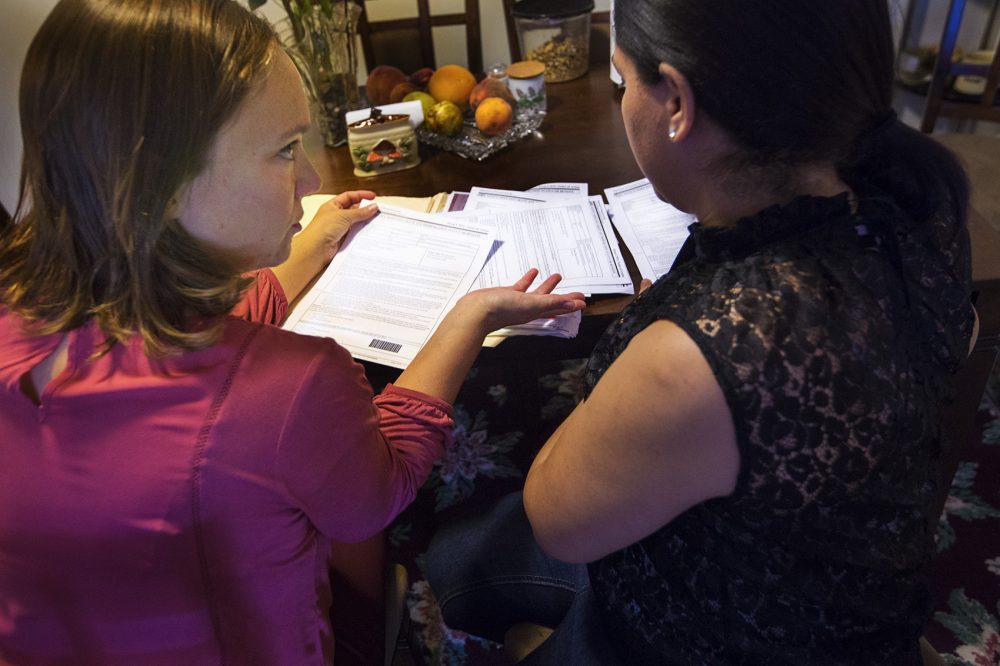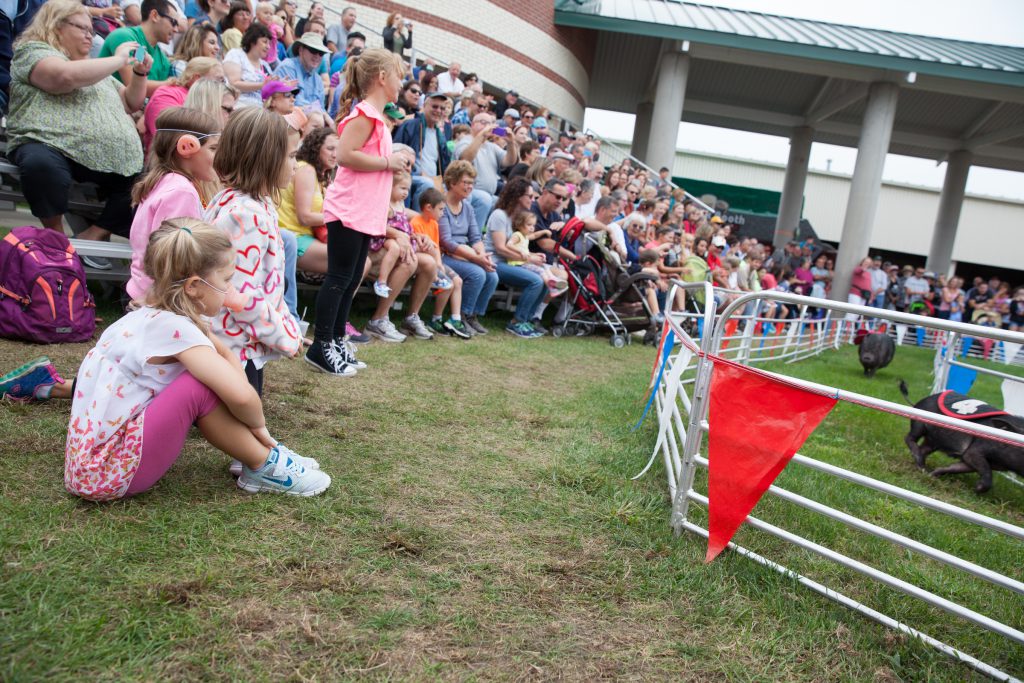Episode 60: Geology is Destiny

This week, immigrants facing domestic violence take a chance applying for a special visa. Plus, we take a nervous look at Vermont’s outdated flood maps, and a new study that finds New England is losing forestland fast. Also, how does geology influence human behavior? We go WAY back into the history of our region to find out. And it’s time once again for The Big E – the massive agricultural fair that ties together the New England states. We’ll give you a taste.

The Pawtuckaway Mountains in Southeastern New Hampshire are the remnant of an extinct volcano. “Blobs” of granite, formed from magma, created the rock formations that characterize much of New Hampshire’s topography. Image via USGS, 1957.
Choosing Between Safety and Deportation
Immigrants living in New England illegally have reason to be on edge. President Trump’s enhanced enforcement priorities are leading to increased arrests. And reports of federal immigration agents showing up at schools and courts are heightening fears among people in the country without authorization. But what happens when that fear is used as a weapon? This episode, reporter Shannon Dooling tells us how immigration status is used to torment and intimidate — and why more people may be looking for a way out.

Some immigrants living here without authorization who’ve been victims of crime in the U.S. may be eligible for a U visa. The application process and lengthy wait time used to be a deterrent, but that appears to be changing under the Trump administration. Here, immigration lawyer Susan Roses, left, reviews documents and with Antonia concerning her U-visa filing. Photo by Jesse Costa via WBUR.
And as Hurricanes rip through Puerto Rico, the Virgin Islands, Texas, and Florida, the impacts are felt in New England, too. Not just in the high winds and surf we saw from Hurricane Jose along the coastline, but in the way we think about risks from those storms. Right now, the National Flood Insurance Program is $25 billion in debt, and Congress is trying to figure out how to make it work. But even before the funding crisis, the national program was not addressing the flood risks in many states, including Vermont. Vermont Public Radio’s Howard Weiss-Tisman reports that some of the ideas under discussion could have real impacts here.

Department of Environmental Conservation floodplain manager Ned Swanberg points to areas in a map of Jamaica that are prone to flooding. Many of the FEMA flood maps in Vermont are outdated and don’t accurately convey the true threat of catastrophic floods. Credit Howard Weiss-Tisman.
Also, one of the ways to prevent flooding is by planting trees – a study in the UK last year showed that planting trees could reduce the height of flooding in by up to 20 percent. But another study, just out from Harvard, shows that New England is losing trees at a rapid rate. The authors say our region is losing forest at a rate of 65 acres a day, and could lose more than a million acres of forest cover over the next half-century. Maine Public Radio’s Fred Bever reports.
Bedrock and Politics in New Hampshire and Vermont
Listeners to Brave Little State – the people-powered podcast from Vermont Public Radio – have a knack for curiosity. Visitors to VPR’s website vote on their favorite listener-submitted questions about Vermont – sending reporters scampering across the Green Mountain State in search of answers.
When we heard the question they took on for this month’s episode, we knew we had to discuss it on NEXT. Matt “Beagle” Bourgault, of Hinesburg, Vermont, asked:
“What does the geology have to do with the character of Vermont? How do the underlying, rocks, soils, topography affect how Vermont is different from other New England states and from New York?”
Our guest Angela Evancie is the host of Brave Little State and managing editor for podcasts at Vermont Public Radio. Also joining us is Sam Evans-Brown, host of Outside/In, a podcast from New Hampshire Public Radio about the outside world and how we use it. Sam’s also a self-professed “secret geology nerd.” (The secret’s out now, Sam.)

This bedrock geologic map shows the folded bedrock that creates Vermont’s long north-south valleys, as well as some blobs of bedrock in the Northeast Kingdom.
Courtesy of the Vermont Department of Environmental Conservation / Agency of Natural Resources.
Do you have a question you’d like NEXT to investigate? Submit it here.
Pleasure Horses, Lobster Rolls, and State Pride at The Big E

Rider Jillian Silva introduces her horse, Indy, to the camera after winning a park horse competition. Credit: Ryan King/ WNPR.
The Eastern States Exposition – better known as The Big E – is a massive fair that runs for two weeks in the fall in West Springfield, Massachusetts. This is The Big E’s 101st year.
The exposition was the brainchild of Joshua L. Brooks, a printer from Springfield, who also operated a farm. At the time, even as industry was booming in New England, farming was in decline – local farmers couldn’t compete with the farms out in the fertile land of the Midwest.

Pig racing at The Big E. Credit: Ryan King/ WNPR.
Brooks’s idea was to start an event that would showcase new farming methods and technology, and establish competitive awards that would motivate farmers to produce more efficiently. Brooks got a group of businessmen together, they purchased some land in Springfield. And they convinced the National Dairy Association, which was headquartered in Chicago, to have their exhibition here instead of the Midwest.
The dairy show was held in September 1916, and by the next year, Brooks had the agricultural showcase that he envisioned.

A woman selling lobster rolls in the Maine building says Maine lobster rolls are better than the Connecticut kind. Host John Dankosky disagrees. Credit: Ryan King/WNPR.
Today, The Big E features many attractions familiar to country fairs. There are still livestock competitions, and of course, lots of greasy fair food. But it’s also a uniquely pan-New England event. On the grounds, six permanent buildings showcase the goods, cuisines, attractions and quirks of each state in our region. As a show about New England, the state buildings were what drew us to the fair last year, and they did not disappoint.
There was so much to see and do at The Big E, we couldn’t possibly take it all in. For a taste, check out this video by the wonderful Ryan Caron King.
About NEXT
NEXT is produced at WNPR.
Host: John Dankosky
Producer: Andrea Muraskin
Executive Producer: Catie Talarski
Contributors to this episode: Shannon Dooling, Howard Weiss-Tisman, Fred Bever, Angela Evancie, Sam Evans-Brown
Music: Todd Merrell, “New England” by Goodnight Blue Moon, “Shameless” by Ani DiFranco
We appreciate your feedback! Send praise, critique, suggestions, questions, story leads, and ideas for your state’s new motto to next@wnpr.org.
